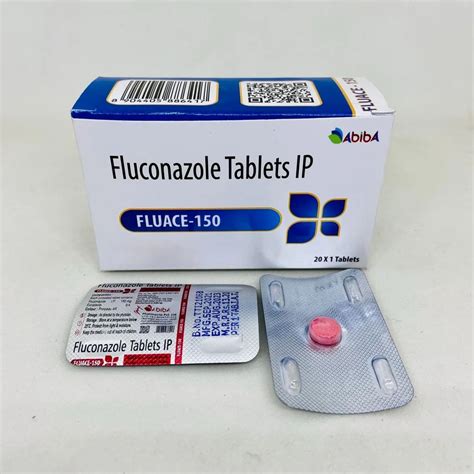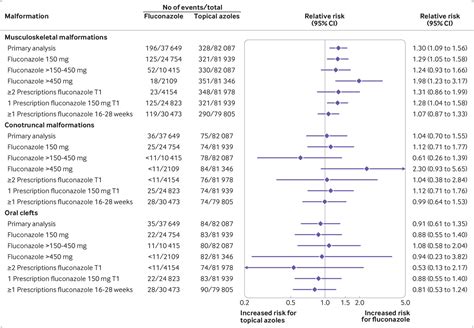Intro
Discover the Fluconazole 150mg treatment guide, covering dosage, side effects, and interactions for effective fungal infection management, including yeast infections and thrush.
Fluconazole 150mg is a widely used antifungal medication that plays a crucial role in treating various fungal infections. The importance of understanding how to use this medication effectively cannot be overstated, as it directly impacts the success of the treatment and the patient's overall health. In this article, we will delve into the details of fluconazole 150mg, exploring its benefits, working mechanisms, and the steps to follow for a successful treatment. Whether you are a patient seeking to understand your treatment better or a healthcare provider looking for a comprehensive guide, this article aims to provide valuable insights into the world of antifungal treatments.
The prevalence of fungal infections has been on the rise, affecting millions of people worldwide. These infections can range from mild to severe, impacting not only the quality of life but also posing significant health risks if left untreated. Fluconazole 150mg has emerged as a frontline treatment for many of these infections, thanks to its efficacy and relatively mild side effect profile. Understanding how fluconazole works, its benefits, and how to use it correctly is essential for maximizing its therapeutic potential and minimizing the risk of adverse effects.
Fluconazole belongs to a class of medications known as triazoles, which work by inhibiting the synthesis of ergosterol, a critical component of fungal cell membranes. Without ergosterol, the fungal cells cannot maintain their structural integrity, leading to cell lysis and death. This mechanism of action allows fluconazole to target a wide range of fungal pathogens, making it a versatile treatment option for various fungal infections, including vaginal candidiasis, oropharyngeal candidiasis, and cryptococcal meningitis, among others.
Introduction to Fluconazole 150mg

Fluconazole 150mg is specifically designed for the treatment of certain fungal infections, with the dosage and duration of treatment varying depending on the type and severity of the infection. For example, a single dose of fluconazole 150mg is often prescribed for the treatment of vaginal candidiasis, while more complex infections like cryptococcal meningitis may require higher doses and longer treatment durations. The flexibility in dosing allows healthcare providers to tailor the treatment to the individual needs of the patient, maximizing the chances of a successful outcome.
Benefits of Fluconazole 150mg
The benefits of fluconazole 150mg are multifaceted, offering patients a convenient, effective, and relatively safe treatment option for fungal infections. One of the significant advantages is its oral administration, which enhances patient compliance, especially in cases where treatment duration is prolonged. Additionally, fluconazole has a broad spectrum of activity, covering a wide range of fungal pathogens, which makes it a valuable asset in the treatment arsenal against fungal infections.How Fluconazole 150mg Works

Understanding how fluconazole 150mg works is crucial for appreciating its therapeutic potential. As mentioned earlier, fluconazole inhibits the synthesis of ergosterol, a vital component of the fungal cell membrane. This inhibition leads to a series of cellular events that ultimately result in the death of the fungal cells. The specificity of fluconazole for fungal cells, with minimal impact on human cells, contributes to its favorable safety profile and effectiveness in treating fungal infections.
Steps for Successful Treatment with Fluconazole 150mg
For patients undergoing treatment with fluconazole 150mg, following the prescribed regimen is paramount for achieving a successful outcome. Here are some key steps and considerations: - **Adherence to Prescription**: It is essential to take fluconazole 150mg exactly as prescribed by your healthcare provider. This includes the dose, frequency, and duration of treatment. - **Monitoring for Side Effects**: While fluconazole is generally well-tolerated, monitoring for potential side effects such as nausea, vomiting, and abdominal pain is crucial. Reporting any unusual symptoms to your healthcare provider can help in managing side effects effectively. - **Lifestyle Modifications**: In some cases, lifestyle modifications may be recommended to support the treatment and prevent recurrence of fungal infections. This could include dietary changes, improved hygiene practices, and avoidance of certain medications that may interact with fluconazole.Practical Examples and Statistical Data

Numerous studies and clinical trials have demonstrated the efficacy of fluconazole 150mg in treating fungal infections. For instance, in the treatment of vaginal candidiasis, fluconazole has shown a high cure rate, with over 80% of patients experiencing significant improvement or complete resolution of symptoms after a single dose. Similarly, in the management of cryptococcal meningitis, fluconazole, often used in combination with other antifungal agents, has been associated with improved survival rates and reduced risk of recurrence.
Common Uses of Fluconazole 150mg
Fluconazole 150mg is used for a variety of fungal infections, each requiring a tailored approach to treatment. Some of the common uses include: - **Vaginal Candidiasis**: A single dose of fluconazole 150mg is often effective in treating vaginal yeast infections. - **Oropharyngeal Candidiasis**: Fluconazole 150mg, taken once daily for 7-14 days, is commonly prescribed for the treatment of oral thrush. - **Cryptococcal Meningitis**: While the dosage may vary, fluconazole 150mg or higher doses are used, often in combination with other medications, for the treatment of this serious fungal infection.SEO Optimization and Readability

To enhance readability and SEO relevance, it's essential to use clear and concise language, avoiding jargon and technical terms that might confuse general readers. Breaking down complex information into shorter paragraphs, using bullet points or numbered lists, and incorporating relevant keywords can significantly improve the article's accessibility and search engine ranking.
Conclusion and Future Perspectives
In conclusion, fluconazole 150mg is a valuable treatment option for various fungal infections, offering a convenient, effective, and relatively safe therapeutic approach. As research continues to advance our understanding of fungal pathogens and their resistance patterns, the role of fluconazole and other antifungal medications will remain critical in the fight against these infections. By following the prescribed treatment regimen, being aware of potential side effects, and adopting preventive measures, patients can maximize the benefits of fluconazole 150mg and improve their outcomes.Engagement and Action

We invite you to share your thoughts and experiences with fluconazole 150mg in the comments section below. Your insights can help others better understand the treatment process and its implications. If you found this article informative, please consider sharing it with others who might benefit from this information. Together, we can promote awareness about fungal infections and the importance of effective treatments like fluconazole 150mg.
What is fluconazole 150mg used for?
+Fluconazole 150mg is used for the treatment of various fungal infections, including vaginal candidiasis, oropharyngeal candidiasis, and cryptococcal meningitis.
How does fluconazole 150mg work?
+Fluconazole 150mg works by inhibiting the synthesis of ergosterol, a critical component of fungal cell membranes, leading to the death of fungal cells.
What are the common side effects of fluconazole 150mg?
+Common side effects of fluconazole 150mg include nausea, vomiting, and abdominal pain. It is essential to report any unusual symptoms to your healthcare provider.
